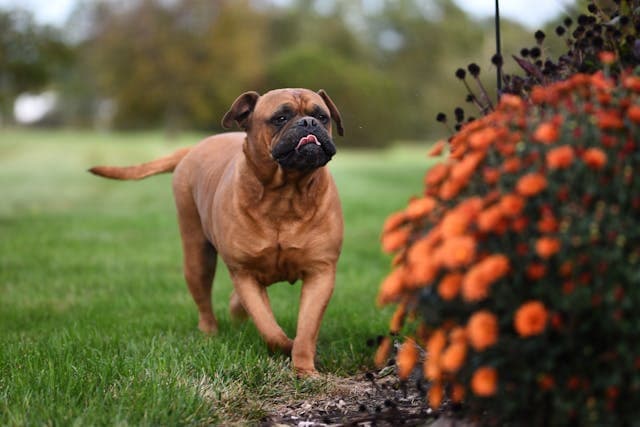The first thing you’ll notice about the Bullmastiff is its impressive size. This muscular dog has a solid build, broad head, and short muzzle. The shape of its jaw and wrinkled face cause this breed to drool more than others. They have a short, stiff coat that comes in fawn, red, or brindle colors. The breed’s expressive eyes are surrounded by a dark “mask,” and its folded ears add a cute appearance that balances its somewhat intimidating presence. Their strong legs contribute to their agility and endurance.
Bullmastiffs are known for their loyal, gentle, affectionate, and protective nature. While they are natural protectors, they are not typically aggressive. Early socialization and training help them form strong bonds with their families and be gentle and affectionate with children. Although they are agile, Bullmastiffs are not the type of dogs who will demand (or enjoy) a morning run. In conclusion, the Bullmastiff is the key to a serene and secure life.




















